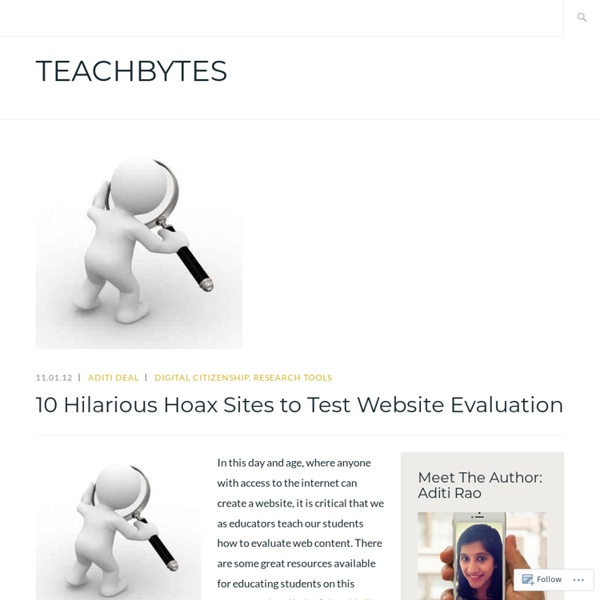Social Media Inventory for High School Students - Teaching Sam and Scout
Just popping in real quick to share a simple but, I think, meaningful activity I did with my students a few weeks as part of “Digital Citizenship Week” at our school… Kids hear a lot today about being responsible with their social media accounts. We warn them that potential employers and college admissions counselors look at what they post and tell them horror stories of people having their lives ruined because of one stupid tweet or thoughtless Facebook rant. – I started by introducing the concept of digital citizenship (basically being a responsible user of social media and other forms of technology) and talking about the impact that the things they post NOW can have on their futures etc. – Then, yes, I allowed them to use their smart phones etc. Social Media Self Inventory (Word Document) *I did this with eleventh graders and consider them a pretty mature group. *I did have two (out of 17) students who claimed they didn’t use social media.
— iKeepSafe Kids
Best practices for attribution
You can use CC-licensed materials as long as you follow the license conditions. One condition of all CC licenses is attribution: crediting the author and giving the source information. Generally speaking, attribution must reasonably include all relevant information supplied by the licensor. Because each use case is different, you can decide what form of attribution is most suitable for your specific situation. The following examples are intended to illustrate what typical prudent practices look like. Basic components of attribution Whenever you are reusing CC licensed works, we recommend that the attribution include the Title, Author, Source, and License. Let’s now go through TASL — we will explain each element in more detail: Title: What is the name of the work? If a title was provided for the work, include it as a part of the attribution. The inclusion of title is a requirement of all CC licenses version 3.0 or earlier, and it is optional for the 4.0 suites. Reasonable attribution
Hot topics - Childnet
Our website, like most websites, uses cookies to distinguish you from other users. This helps us to improve your experience when you browse our website and also allows us to improve our site. By using cookies, the website is essentially able to ‘remember’ you during a single visit to the site, known as session cookie or for repeat visits, known as persistent cookies. Necessary Cookies Necessary cookies enable core functionality such as page navigation and access to secure areas. Analytics allow us to recognise and count the number of visitors and to see how visitors move around the site when they are using it. We use social features on this site to allow you to like and share content with your social networks.
Thing 14: News Literacy
Search for a hot news topic via Google or Bing and in an instant you’ll be inundated with news stories from local and national news sources, well known and obscure bloggers sharing their points of view, international news coverage, satire sites, clickbait and even fake news. With so many news sources available online and in print, it’s more challenging than ever to judge the reliability, accuracy and point of view of many resources. Which all makes it more important than ever to help students develop news literacy skills. Teaching news literacy skills is a great opportunity for cross discipline collaborations. Readings & Resources Truth, truthiness, triangulation: A news literacy toolkit for a “post-truth” world – If you read nothing else, read this one. Lesson Sources Tools Each of you will have different interests to explore with this topic. *Only for students participating in the workshop for PD credit hours through the Canavas LMS system. Save
Online safety for teenagers
This lesson addresses the topic of online safety in a motivating way, allowing students to discuss issues, share their opinions and ideas and then do some online activities to finish the lesson or as a homework task. Aims: To develop students’ spoken fluency and use of modals for advice. Age: Teenagers Level: CEF level A2 and above Time: 50-60 minutes Materials: The lesson plan and the role-play worksheets can be downloaded below. You can also download two online safety posters for teenagers and kids, produced by the British Council.
Internet and computer safety
Internet safety tips Many parents are worried about letting their child use the internet. On the LearnEnglish Kids website we take child protection very seriously. Only children can comment on the kids section of the site and all comments are checked before we publish them. Below you will find some tips to help your child use computers and the internet safely. Talk to your child about the sites, applications and internet-enabled devices they use. Further reading Here are some useful internet safety websites. www.kidsmart.org.ukwww.thinkuknow.co.uk/parentswww.saferinternet.org.uk
The Teacher’s Guide to Keeping Students Safe Online
Technology is a beautiful thing. It breaks down barriers and brings minds together in ways that were unthinkable less than 50 years ago. Our civilization's greatest advancements in recent years have come from technological breakthroughs. However, there is a flipside to everything. The world of technology can also be dangerous when it comes to students and the internet. A few slip ups can place a child in real danger. What is Online Safety? “Online safety” is a term that gets thrown around a lot when dealing with students and the internet. Online safety is not… Blocking websitesOverbearing internet monitoringHeavy online restrictionsLimited internet usageThe criminalization of websites like Facebook and Twitter Too often educators use these means in order to keep their students “safe.” Online safety is… Knowledge There is an old Chinese proverb that reads: “Give a man a fish and you feed him for a day. The Internet is one of the greatest tools on the planet for enhancing student learning.



